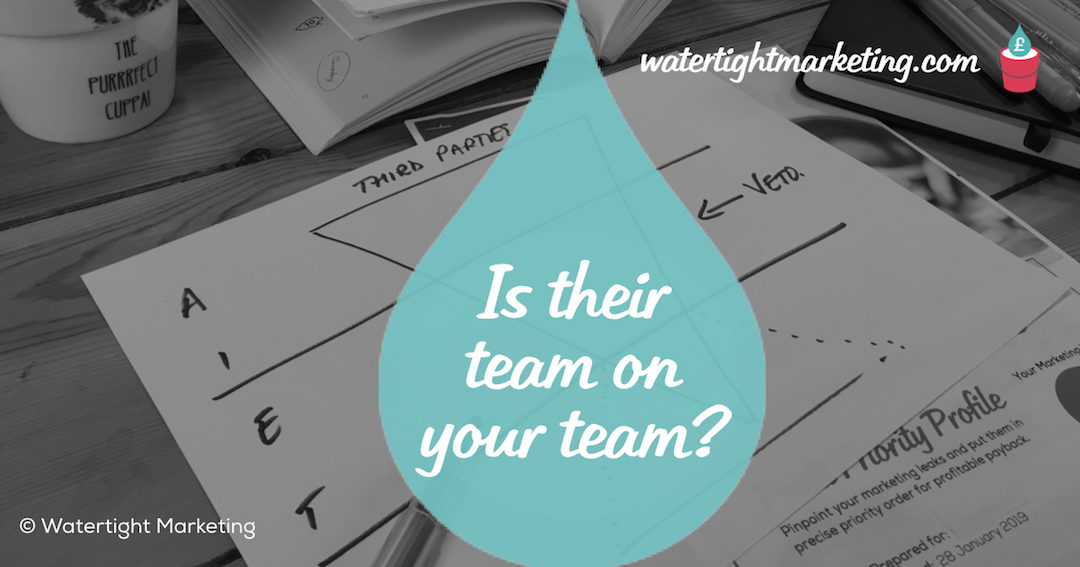This is the fourth in a series of posts looking at The Watertight Marketing Framework. Today, we’re looking at your audiences, i.e. who do you need to talk to.
Buying decisions, particularly high-value or complex ones, are not made in isolation. An enthusiast might spend time on a forum and reading reviews, a husband might ask his wife and children, and an employee might ask colleagues or their boss. In many cases gaining the input, and approval, of others is essential in the buying decision. You need to know who your buyers are talking to, and get those people on side. You need to know who’s on their team, and get them on yours.
The source of a message is often as important as the message itself. The opinions of others are sought during a buying decision for two main reasons: people may wish to shortcut the process by asking someone they think knows the subject well, and secondly, they may look for reassurance that their decision is sound.
This is why you’ll hear marketers talk about including ‘influencers’ as part of your wider audience. It’s good advice. But, it’s such a broad term. Thinking about which specific people have what level of influence at each stage of the process allows you to communicate with them more precisely.
Which influencers? When?
What’s interesting, and powerful in terms of your marketing, is to think about the different people buyers turn to at the different stages of their decision. What you’ll typically find is that people cast the net wide in the early stages and then reduce down the people whose opinion they particularly value as they get closer to the purchase.
 (In a purchase where something is being bought and then rolled out to a large group of others, e.g. software for a company, the diagram would flare out at the bottom to look a bit like an ice cream sundae glass.)
(In a purchase where something is being bought and then rolled out to a large group of others, e.g. software for a company, the diagram would flare out at the bottom to look a bit like an ice cream sundae glass.)
If you think about who your buyer might turn to at the different points in the buying decision, you’ll be better equipped to know what those third parties might be expected to know about you, and how to reach them. It might go something like this:
- Awareness: Word of mouth | Think about the people your buyers follow in social media.
- Interest: Industry or interest area influencers | People seen as experts on the subject.
- Evaluation: Referrers | People they actually know that have an opinion about you.
- Trial: Decision makers | People who have a say in or are affected by the decision.
- Adoption: Buyers | The ones with the purse strings.
- Loyalty: Users | People who use what has been bought.
The key point about knowing who’s on the extended buying team at the different stages is that you will want different people to know something slightly different about you. By mapping audiences in this way (then working from the bottom up, in terms of importance) enables you to put together a powerful set of materials for them, as well as the buyer.
So, when your buyer turns to a trusted third party, they have something good to say about you.
Chapter 5 of Watertight Marketing looks at this in depth and gives you what you need to get your buyer’s team on your team so that more people all the way through their decision to buying from you.
© Bryony Thomas | Cartoon by Simon Ellinas. Illustration by Lizzie Everard.

Bryony Thomas
Author & Founder, Watertight Marketing
Bryony Thomas is the creator of the multi-award winning Watertight Marketing methodology, captured in her best-selling book of the same name. She is one of the UK's foremost marketing thinkers, featured by the likes of Forbes, The Guardian, Business Insider and many more, and in-demand speaker for business conferences, in-house sales days and high-level Board strategy days.



Trackbacks/Pingbacks